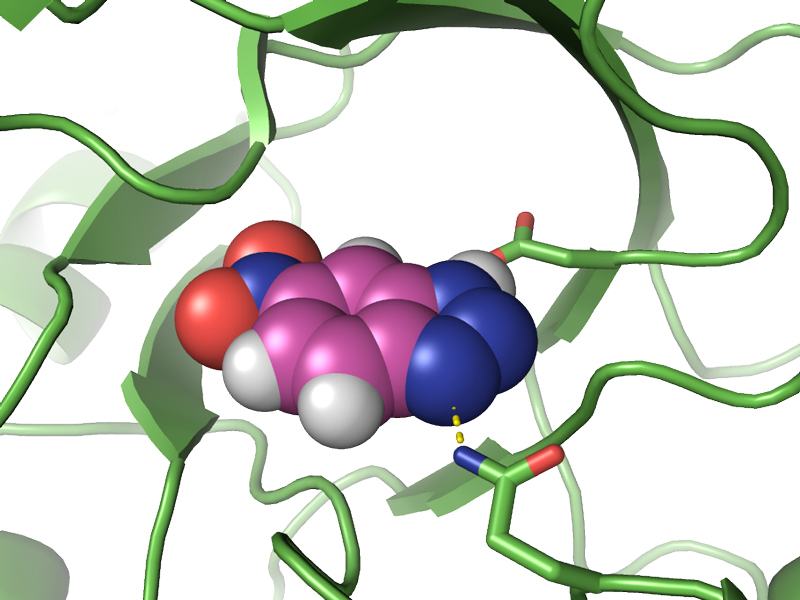An artificial enzyme that promotes 700 reactions per second
In a recently published Nature paper, ETH scientists presented the first artificial enzyme that readily competes with its natural counterparts in terms of catalytic throughput. Structural insights gained from its structure may facilitate the development of new enzymes in the future.

The research group of Professor Donald Hilvert, ETH-Zurich Laboratory for Organic Chemistry (LOC), along with collaborators from the California Institute of Technology (Caltech), has generated the most successful artificial enzyme known today. As recently reported in Nature, the newly established enzyme converts 700 substrate molecules per second. Compared to a natural enzyme, it scores very well: within the same time period, triose phosphate isomerase, a very fast enzyme in glycolysis, turns over 430 molecules.
Computer design plus directed evolution
The starting point for the new enzyme was a xylanase, an enzyme that usually cleaves sugars. In shape, xylanase resembles a barrel open on both sides. The researchers redesigned its interior to promote an entirely different reaction. "Much like retooling a factory for production of another product," explains Rebecca Blomberg, the first author of the study and an ETH graduate.
The first step toward the repurposed enzyme was taken at Caltech. There, a computer-designed prototype for the Kemp elimination, a model reaction in which a substrate molecule is altered by proton removal, was generated. Though successful, this first version processed only one substrate molecule per second. In Zurich, the prototype was improved by directed evolution. It was produced in bacteria, subjected to both random and targeted mutation, and more efficient versions identified by screening. Seventeen rounds later, the optimised enzyme was attained. "Basically, this process is a lot like dog breeding," says Hajo Kries, LOC doctoral student and a co-author of the study.
Efficiency due to optimal structure
The investigators did not simply show that combined computational design and laboratory evolution can create efficient artificial enzymes. In collaboration with researchers from the Biochemical Institute at the University of Zurich, they also determined the exact structure of their catalyst, providing detailed insight into how it performs so successfully. The ability of the enzyme to bind the substrate molecule snugly "like a hand in a glove” was apparently decisive. As a consequence, the substrate only adopts a single orientation in which the distance and angles to the catalytic group on the enzyme responsible for initiating the chemical change in the substrate are optimal. A second catalytic group, also put in place by the researchers, is also perfectly positioned to enhance catalytic efficiency.
Designing enzymes at will
"The current dream is to extend the concept ‘design on the computer, optimise in the lab’ to the creation of enzymes for any desirable reaction," says Blomberg, especially those applicable to medicine and industry.
Kries looks a little farther into the future: "If we could teach the computer to do what we learned from laboratory evolution, it might eventually become possible to design high-efficiency enzymes directly in silico," reducing the development of new catalysts from years to a matter of months.
Literature Reference
Blomberg R, Kries H, Pinkas DM, Mittl PRE, Grütter MG, Privett HK, Mayo SL, Hilvert D: Precision is essential for efficient catalysis in an evolved Kemp eliminase. Nature, published online 16 October 2013, doi:external page 10.1038/nature12623